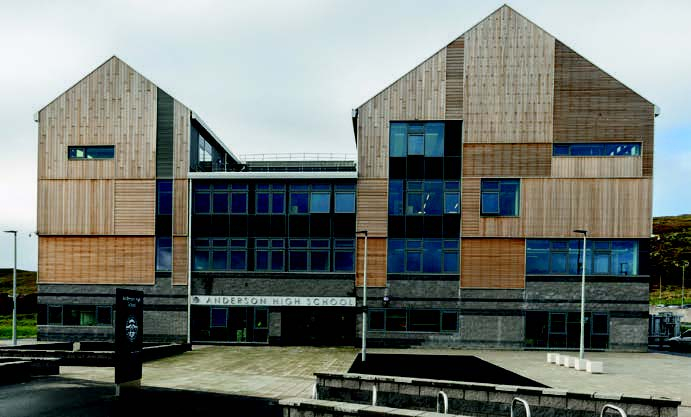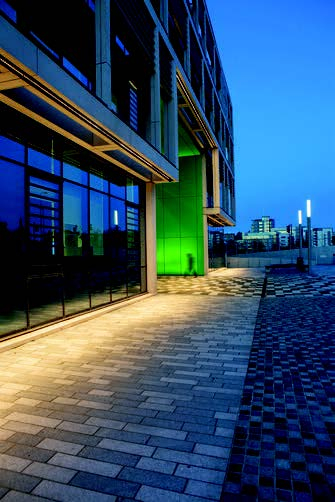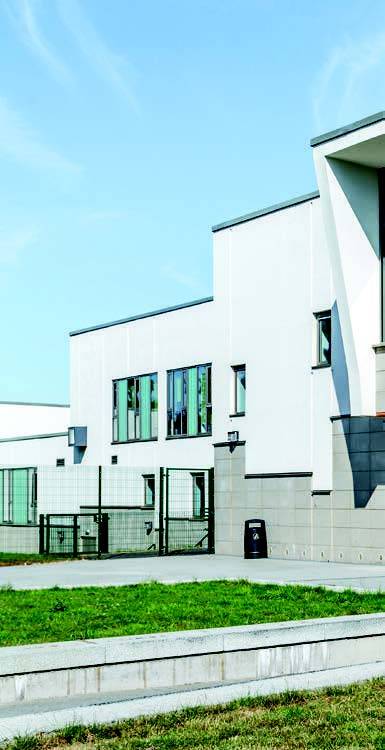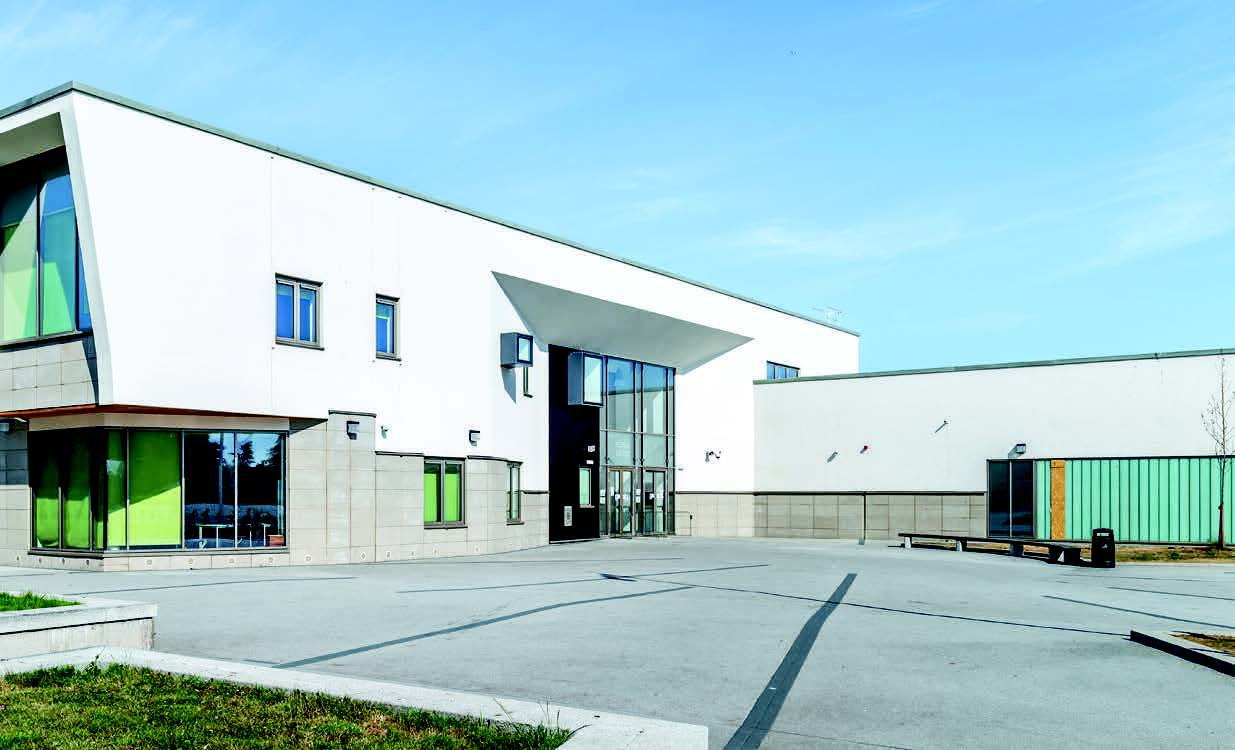
The Scottish Government has committed to investing £1bn in rebuilding and refurbishing schools after the current school building programme ends in 2021. Andrew Pring examines the new deal and the philosophy of Peter Reekie, the man charged with delivering it.
This new phase of investment – announced in December 2019 by Deputy First Minister and Cabinet Secretary for Education John Swinney - means an estimated 50,000 pupils will see their schools renewed or refurbished.
The current Schools for the Future Programme ends in March 2020, having delivered 117 new school projects benefitting 60,000 pupils since it began in 2009.
Swinney commented, “This further £1bn investment will build on the progress already made by the existing Schools for the Future Programme, continuing the momentum, and driving further improvements in the learning estate from 2021.”
“Every pupil should have the best support throughout their education, which includes access to high-quality, up-to-date facilities that parents, staff and children can be proud of”.
The new funding will deliver digitally enabled, low-carbon schools and campuses, which will be developed in partnership with the Convention of Scottish Local Authorities (COSLA) and councils, with a priority focus on schools in the poorest condition.
COSLA Children and Young People Spokesperson Councillor Stephen McCabe welcomed the news: “I am pleased that this investment will be developed in partnership with COSLA. We look forward to working with the Scottish Government to ensure that we get this right.”
The programme will be driven by the Scottish Futures Trust (STF), which works with local authorities across Scotland to achieve the very best value from their investment in new schools.
Programme objectives
STF Chief Executive Peter Reekie identifies three broad objectives:

Boroughmuir High School, Edinburgh

Portobello High School, Edinburgh

Portobello High School, Edinburgh
A new shape
Thanks to the STF’s prompting, designs of secondary schools have moved from an E shape to a block and Reekie wants that emphasis to continue. “I recognise the engineering challenge associated with that, but it has been a great enabler of different spaces and a change in which I hope SFT has played a role
co-ordinating and sharing learning between local authorities and across the design community.”
A community dimension at it’s core
Reekie explains, “Today, many schools go beyond the tradition of teaching children from 9am until 3:30pm on weekdays during term time. These public funds must contribute to inclusive economic growth and sustainable communities. Communities must be brought in to use the facilities of the buildings to provide a range of services both out of hours and during school hours.
“Saving space and releasing land are powerful drivers. Of most value though is using investment in a building to drive the transformation of services for a community”. Lasswade Centre (see below), is one of our early pilots for the programme, which brought seven services into one building and now extends to buildings like the Waid in Fife.
Linking to industry
Reekie points out, “This is something which our universities are increasingly active in. It sits at the heart of some ambitious projects in both Glasgow and Edinburgh supported through City Deal funding amongst many other sources. There must however be more of a role for these links in colleges and schools.”
Intergenerational learning
Reekie says buildings now must “work across the ages with campuses for ages 3 -18. College and school facilities should combine to be truly intergenerational learning places which will support the ever-increasing need for re-skilling thorough life, and keeping mentally active into older age.”
Schools tailored to local needs Reekie adds “Schools won’t be the same everywhere and will respond to what different communities need. If we are simply replacing an old building with a new one which is designed to modern standards but to meet fundamentally the same purpose as the old building, we are probably getting it wrong. These new buildings must be fit for the future and ok for now, not just a lot better than the old one.”
Energy efficiency
Energy efficiency is the one weakness in an otherwise successful schools building programme. The current programme has resulted in some new school buildings using more energy than the buildings they replaced. Some of that is because the building is used more intensively and for more things and contains more digital kit - which is to be celebrated. But I have a nagging concern that the fundamental energy performance of these buildings and the behaviours of their users and operators, and the interaction of all of those things with the comfort and wellness promoted by the internal environment, needs more work”.
Quality concerns
Reekie says, “the way buildings are bought and produced needs transforming to improve the quality of the product, the productivity of the industry and the fairness of the work of the many thousands of people involved in the construction supply chains”.
Cost concerns
Reekie adds “I’m not about to announce a change in the metrics to go with John Swinney’s £1bn but discussions I am part of are now are increasingly centred around the need to procure for industry as well as from industry, to produce a high-quality and sustainable product which works for sustainable communities”.
The Lasswade Centre – an exemplar school
SFT’s Schools Pilot project brought together two councils from opposite sides of the country to build state-of-the-art schools for the benefit of their communities (Eastwood High School in East Renfrewshire and the Lasswade Centre in Midlothian), using a similar design.
Initiated between 2011-13, it was the first time two Scottish councils had come together and proved so successful that the collaborative approach has been used by other councils to achieve benefits and savings across the programme.
The Lasswade Centre has stood out for the numerous community benefits being delivered as it has a 1,500-pupils secondary school, a community library, a town hall, a 25m leisure pool, a specialist gymnastics centre, varied sports facilities, a crèche, a community cinema and café all under one roof and open to the public.
Picture credit Anderson High School, Lerwick, the Shetlands – woody Portobello High School, Edinburgh – narrow white side